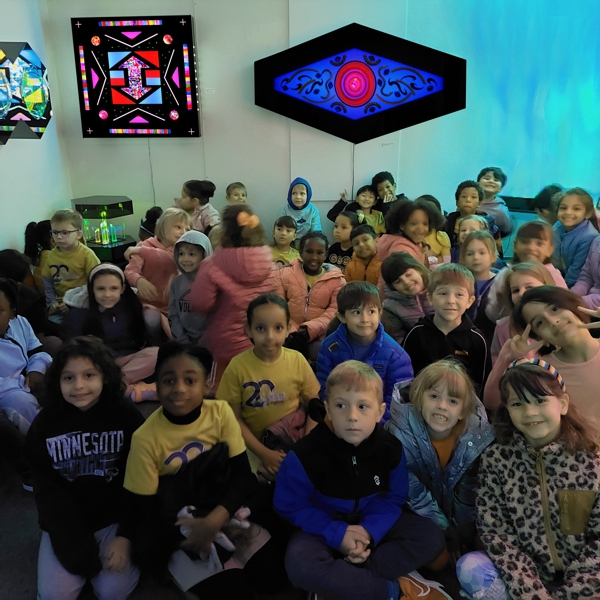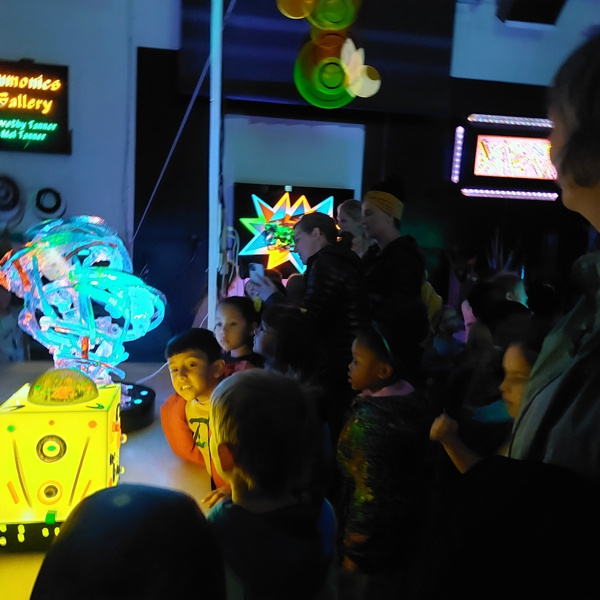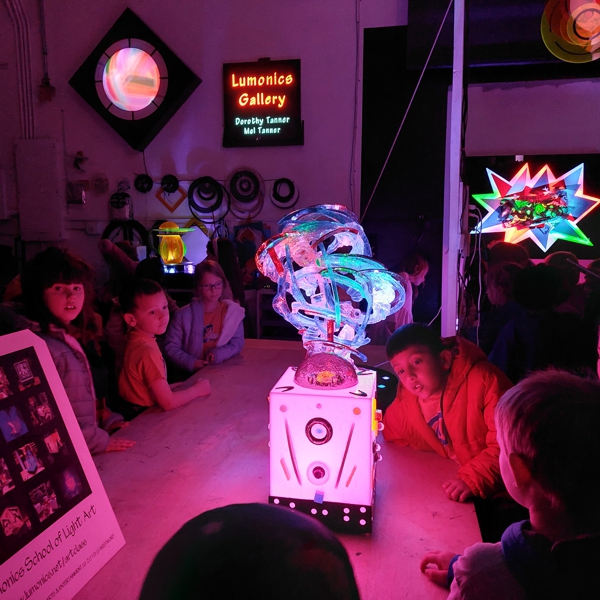Lumonics is honored to be a Community Partner with Denver Public Schools.
We will be presenting our field trips all year round.


Jun 06

Jun 06
Lumonics hosted students from the Mountain Vista Elementary School Summer Program. They asked a lot of questions including “What can I get for $2,000?”
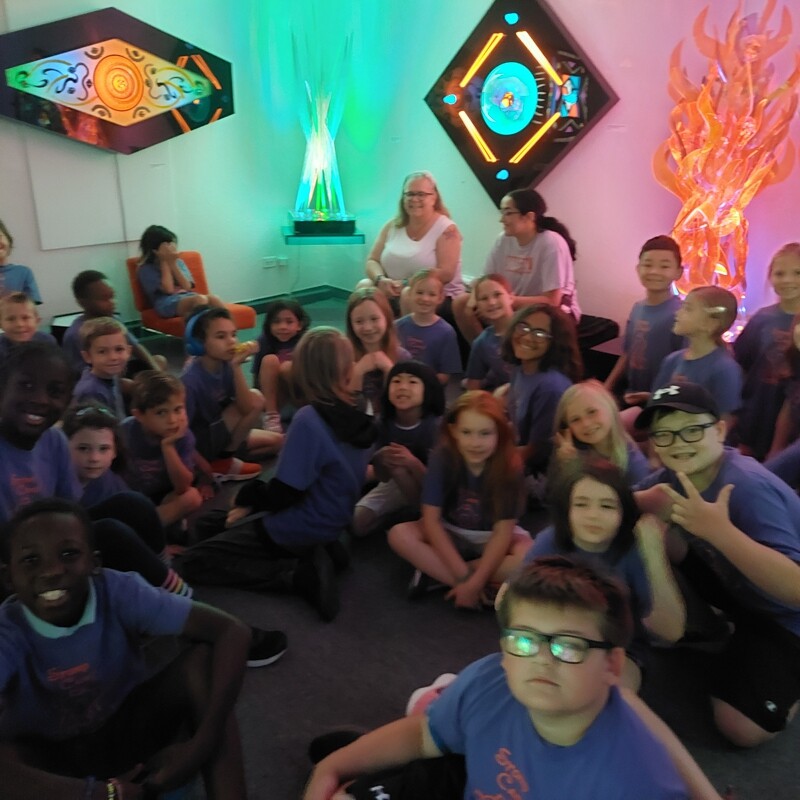
Campers in one of the gallery rooms
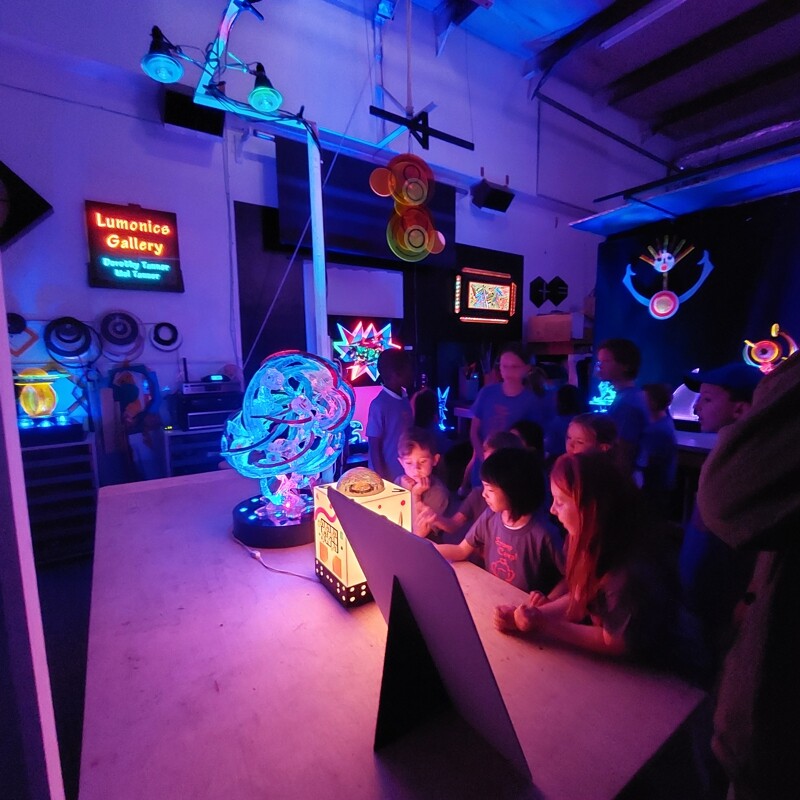
Campers in the studio/art school section of Lumonics
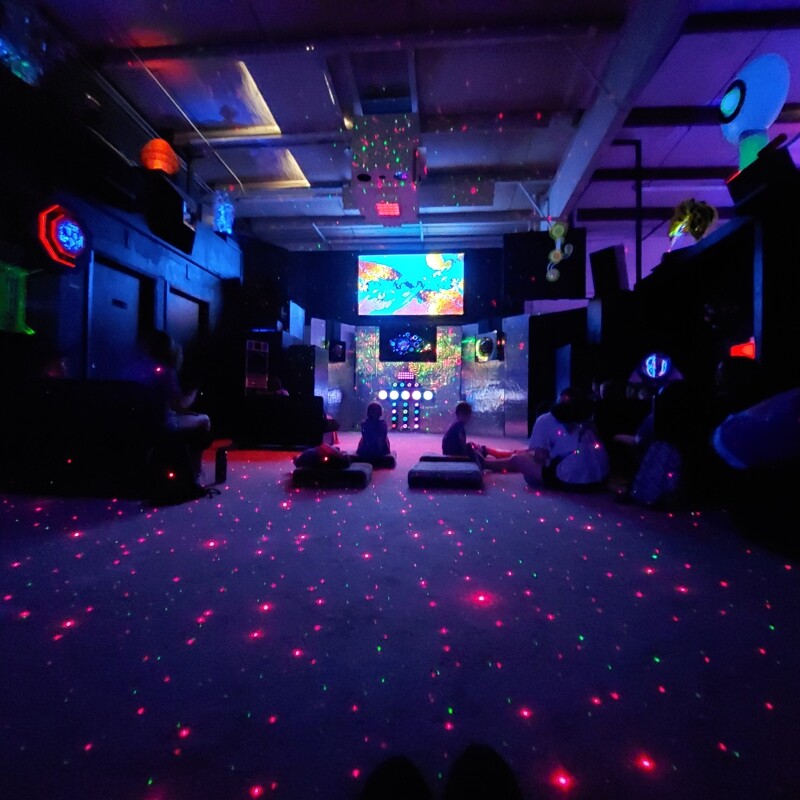
Campers experiencing the immersion in the performance space with one of the specials effects on
May 03
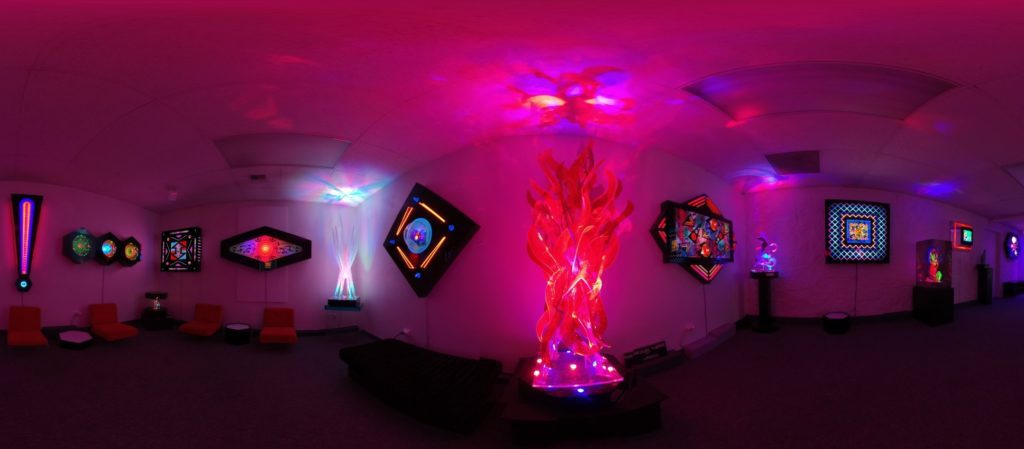
Lumonics Gallery and Performance Space on 73rd and Washington…for now. Photo by Marc Billard
Lumonics Light and Sound Gallery has been around for decades, ever since artists Mel and Dorothy Tanner started working with light sculptures and sound to create immersive experiences back in 1969. Dubbed “Lumonics,” the unique art form was conceived to engage multiple senses — primarily sight and sound — simultaneously, providing audiences a deeper connection to the work and the world around it.
Barry Raphael and Marc Billard became part of the Lumonics artist collective in 1972, when they separately encountered what the Tanners were already deeply into. “It started for me when I walked into the Tanners’ gallery in Miami,” recalls Raphael, who was the first to join the collective. “I was a language arts teacher in Chicago at the time, and a friend of mine was splitting his time between Chicago and working down at Dade Community College. He told me about it, and I went. It was like the ultimate field trip for me. It was an amazing moment, seeing the theater the Tanners had set up and everything in it. My friend was thinking of trying to move it back up to Chicago, but that never happened. I never set out to move to Miami, but it’s just the way it happened. The experience had mesmerized me.”
“And I was working construction at the time in South Florida,” adds Billard. Mel Tanner’s sister was his neighbor at the time, and she’d told him he should go and check it out. It took him about a year to do so, but when he did, Billard says his reaction was remarkable. “Oh, my God,” he says. “I was speechless.” Mel asked him if he wanted to do some work with him. That was the beginning of Billard (along with his wife, Barbara, who passed away in the summer of 2023) working with the Lumonics collective, building many of the pieces from then on.
“It was Marc’s arrival and all his wonderful work that was really the first expansion point back then,” Raphael says. “He was able to create larger pieces with more detail, and that’s what Mel [Tanner] was working for.”
Mel was working with simple shapes before,” says Billard. “When I came in and got my fingers in it, it was able to become very different. Wall pieces and sculptures. New designs. It changed.”
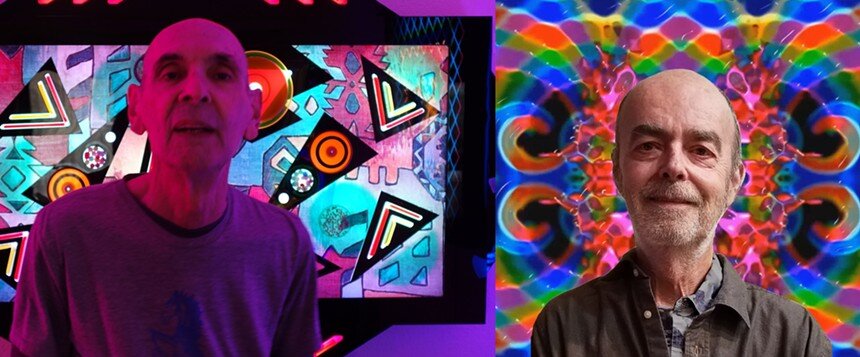
Barry Raphael and Marc Billard have helped represent Lumonics for over fifty years
They brought the Tanners’ artistic legacy to Denver in 2008, where it’s resided ever since, and Raphael and Billard are working to ensure that the exhibitions survive and thrive for many years to come. They still put on immersive shows every Saturday night at the Lumonics Light and Sound Gallery, 800 East 73rd Avenue; tickets are still only $25, are limited to a small, intimate group only, and include refreshments as well as illumination. Tickets for that event and several others are available through Eventbrite.
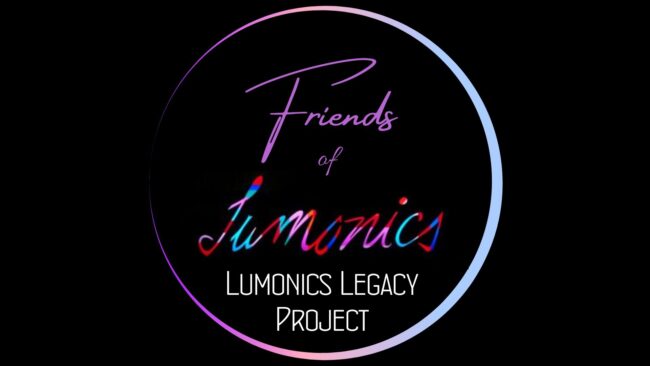
But in terms of the future of the project, Raphael and Billard have started the Lumonics Legacy Project. They hope to raise $30,000 in order to preserve more than 200 Tanner light sculptures, as well as the Lumonics archives, which include collages, sketchbooks, hand-painted 35-millimeter slides, original projector tray paintings, preserved media articles, photographs and an expanding library of music visuals. In addition to raising money for creating a sustainable legacy and future, the crowdfunding effort plans to establish a Friends of Lumonics nonprofit, which will support partnerships to share Lumonics with the world.
“We’re in our seventies now,” smiles Raphael, “and are deeply committed to seeing this work remain accessible for future generations. What was once a collective of seven is down to just us two, but we have friends who’ve volunteered to help us create this Legacy Project.”
Specifically, Raphael hopes that the project will allow Lumonics to bring more than 100 pieces out of storage and work on restoring them, with more environmentally sound and long-lasting LED technologies, while still keeping within Mel and Dorothy Tanner’s original vision.
Raphael says that the final step of the Legacy Project would be for the whole collection and gallery to move one more time.
Apr 20
We hosted first-graders from Highpoint Academy today, part of the Denver Public School System. I always get a kick out of asking them if they have any questions, and the first one to raise his hand says, “Omm,I forgot my question.” I do that, too!
www.lumonics.net/field-trips
